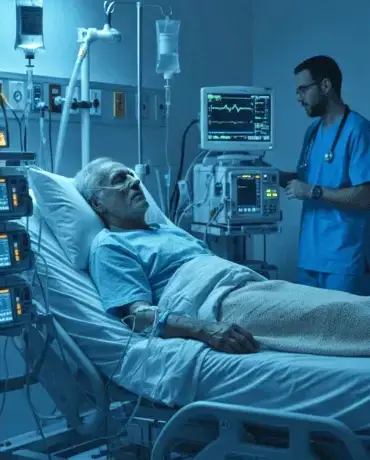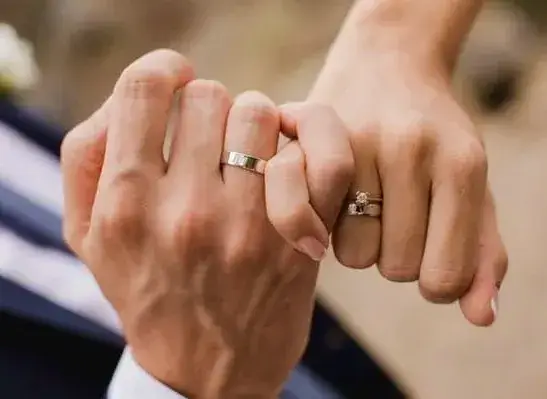To Die. There exists a profound paradox at the heart of modern medicine. The very individuals who dedicate their lives to forestalling death the surgeons, oncologists, and emergency physicians.
The front lines of human fragility so often choose a radically different path for themselves when their own end is near.
While patients and their families often cling to hope fueled by technology, demanding every possible intervention, doctors have a saying, whispered in hospital corridors and shared over weary cups of coffee: “Not for me.”
What do physicians know that the rest of us don’t? They know the intimate, unvarnished truth of our final moments. They have seen what lies beyond the dramatic, sanitized depictions of medicine on television.
To die, moments of reflection.
They have performed CPR on frail, elderly bodies, feeling ribs crack under their hands, only to buy a few more agonizing hours of life in an intensive care unit.
They have watched patients tethered to a constellation of tubes and machines, unable to speak, to eat, or to recognize their loved ones, existing in a limbic state that is neither life nor death.
This firsthand knowledge fundamentally reshapes their perspective. For them, death is not a failure to be defeated at all costs, but a natural process that, when inevitable, should be met with dignity, comfort, and peace.
When surveyed, their choices are remarkably consistent and reveal a deep desire to avoid the very “heroic” measures they are trained to provide.
Their collective wisdom offers a powerful lesson for us all, reframing the conversation from a desperate battle for more time to a thoughtful pursuit of a better quality of life, right up to the very end.
The Rejection of Futile Care.
“Promise You’ll Let Me Go”
The cornerstone of a doctor’s end-of-life preference is the rejection of what is known in the field as “futile care.” This refers to interventions that may prolong biological function but have no reasonable hope of improving a patient’s quality of life or reversing their terminal condition.
As Dr. Ken Murray, a retired clinical assistant professor of family medicine, famously wrote in his seminal essay, “How Doctors Die,” it’s not that doctors want to die, but that they know the limits of medicine and the profound suffering that can result from over-treatment.
One of the most common refusals is for cardiopulmonary resuscitation (CPR). On television, CPR is a miracle procedure that snatches people from the jaws of death. In reality, for a patient with a terminal illness or advanced age, the outcomes are grim.
Successful resuscitation is rare, and those who do survive often suffer from brain damage, broken ribs, and a prolonged, painful recovery, only to succumb to their underlying illness days or weeks later.
This is why studies consistently show that an overwhelming majority of physicians as high as 88% in some surveys have advance directives specifying “Do Not Resuscitate” (DNR).
They are not giving up; they are choosing to avoid a violent and often fruitless final struggle.
The Ideal Death.
At Home and In Peace.
While a significant percentage of the general population dies in the sterile, impersonal environment of a hospital, surrounded by the beeping of monitors, physicians overwhelmingly prefer a different setting.
They want to die at home!!!
This choice isn’t merely about comfort; it’s about retaining a sense of identity and humanity in their final days.
A hospital is a place of intervention, but a home is a place of living. It allows for the simple dignities that are often stripped away in an institutional setting: sleeping in one’s own bed, the presence of pets, the familiar sights and sounds of a life well-lived, and, most importantly, the unrestricted company of family and friends.
A hospice or a home-based palliative care setting prioritizes this vision, shifting the goal from curing the incurable to managing symptoms and maximizing comfort.
Research confirms this preference, showing that physicians are significantly less likely to die in a hospital or be admitted to an ICU in their last six months of life compared to the general public. They choose the sanctuary of the familiar over the cold functionality of the clinical.
The Primacy of Comfort.
Palliative Care over Aggressive Treatment
When faced with a terminal diagnosis where the trajectory is clear, doctors consistently prioritize palliative care. This is a branch of medicine focused not on extending life, but on alleviating suffering.
It’s a philosophy centered on managing pain, shortness of breath, anxiety, and other debilitating symptoms so that a person’s final days can be as peaceful and meaningful as possible.
A key tool within palliative care, reserved for the most severe cases of intractable suffering, is palliative sedation. This is not euthanasia.
Rather, it is the use of medication to induce a state of deep calm and unconsciousness, relieving a patient from physical or existential agony that can no longer be controlled by conventional means.
A patient is allowed to slip into a deep sleep, free from pain, while their body naturally shuts down. For a physician who has witnessed the horrors of a patient gasping for air or writhing in uncontrollable pain, the ability to ensure a serene passage is seen as a profound act of compassion.
It is the ultimate expression of the medical oath to “first, do no harm,” which includes the harm of allowing a patient to suffer needlessly.
Consciousness and Connection.
The Value of a Clear Goodbye.
One might assume that the first priority at the end of life is to be pain-free, but for many doctors, it is intrinsically linked to another, equally important goal: maintaining mental clarity for as long as possible.
Aggressive treatments, high-dose narcotics, and the delirium that often accompanies ICU stays can rob a person of their ability to communicate. It creates a fog that severs the final, precious connections with loved ones.
Doctors understand that the end of life is not just a biological event; it is a deeply personal and familial one. They want the chance to have final conversations, to share memories, to say “I love you,” “I forgive you,” and “goodbye.”
They are often willing to trade a few extra days or weeks of heavily medicalized existence for a shorter period of conscious, meaningful interaction.
This choice affirms that the quality of our last days, measured in moments of connection and clarity, is far more valuable than the quantity, measured in heartbeats on a monitor.
The Final Autonomy.
Acknowledging the Right to Choose.
In jurisdictions where it is legal, many physicians also express support for medical assistance in dying (MAID), or euthanasia, as an option for themselves.
This is perhaps the most personal and complex aspect of their end-of-life choices. For many, it is not about a desire to die, but about a desire for autonomy in the face of unbearable suffering.
Having seen the devastating progression of neurodegenerative diseases or the relentless pain of late-stage cancer, the option to choose the moment of one’s departure is seen as the ultimate act of control and dignity.
It ensures a death that is on one’s own terms, preventing a long, drawn-out decline into helplessness.
Support is not universal and is often shaped by personal, religious, and cultural factors, but in countries like Belgium and Canada, studies have shown that a significant majority of physicians approve of the practice and would consider it for themselves if faced with an incurable condition causing immense suffering.
In the end, the way doctors choose to die is a reflection of their unique wisdom. They teach us that more medicine is not always better medicine.
They show us that courage at the end of life is not about enduring every possible procedure, but about having the clarity to define what a “good death” means for you and the foresight to make those wishes known. They choose a path of peace over a path of pain, connection over isolation, and dignity over a protracted, high-tech struggle.
It is a powerful final lesson from the people who know death most intimately: that a life well-lived deserves a death well-considered.
Have a Great Day!






